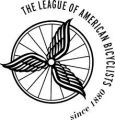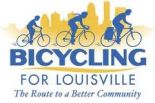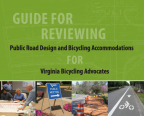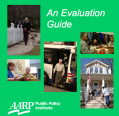This folder contains benchmarking and evaluation methods, traffic monitoring guides, and pedestrian saftey tools.
Table of Contents
Benchmarking and Evaluation
2011 Bicycle Friendly Award Winners (League of American Bicyclists) June 14, 2011. People across the country are seeing that bicycling is a fun, healthy and green way to get around. Businesses, Universities, Communities, and States have tapped into America's growing demand for cycling and responded with concrete actions to improve conditions. The Bicycle Friendly America program is a resource for these groups to measure current conditions, to get recognition for their work and to receive hands-on assistance to create even more safe and welcoming places for cycling. Each year, Bicycle Friendly Awards are handed out to those organizations and locations that have made the greatest strides towards creating bicycle friendly areas. Here are the 2011 award winners. (URL)(PDF)
June 14, 2011. People across the country are seeing that bicycling is a fun, healthy and green way to get around. Businesses, Universities, Communities, and States have tapped into America's growing demand for cycling and responded with concrete actions to improve conditions. The Bicycle Friendly America program is a resource for these groups to measure current conditions, to get recognition for their work and to receive hands-on assistance to create even more safe and welcoming places for cycling. Each year, Bicycle Friendly Awards are handed out to those organizations and locations that have made the greatest strides towards creating bicycle friendly areas. Here are the 2011 award winners. (URL)(PDF)
2011 Bicycle Friendly States
2011 Bicycle Friendly Communities
2011 Bicycle Friendly Businesses
2011 Bicycle Friendly Universities
 Members of the Alliance for Biking & Walking have a powerful new tool with the 2010 Benchmarking Report, published in January 2010. In this presentation from Jeff Miller, the Alliance CEO discussed how advocates can use the report to measure progress, compare their state or city to others, and other tactics.
Members of the Alliance for Biking & Walking have a powerful new tool with the 2010 Benchmarking Report, published in January 2010. In this presentation from Jeff Miller, the Alliance CEO discussed how advocates can use the report to measure progress, compare their state or city to others, and other tactics.Benchmarking presentation (DOC)
Bikeability Checklist (National Center for Bicycling & Walking)
 This resource from the National Center for Bicycling and Walking (NCBW) is great to use for educational purposes by taking a group out for a bike ride and having them rate their community. A subjective survey that will reveal attitudes, obstacles, and opportunities for bicycling.
This resource from the National Center for Bicycling and Walking (NCBW) is great to use for educational purposes by taking a group out for a bike ride and having them rate their community. A subjective survey that will reveal attitudes, obstacles, and opportunities for bicycling.Bikeability Checklist (NCBW) (PDF) (156KB)
Getting Local Statistics (Bicycling for Louisville)
 Tips on getting local statistics from Barry Zalph of Bicycling for Louisville.
Tips on getting local statistics from Barry Zalph of Bicycling for Louisville.Getting Local Statistics. (DOC) (23KB)
 This 2010 guide — authored by the Fairfax Advocates for Better Bicycling and funded, in part, by the Alliance's Advocacy Advance Grants program — outlines ways bicycling proponents can get involved in the process of designing, approving, building, and retrofitting roads to ensure that bicycling accommodations are integrated into the plans where needed. The 28-page resource covers the basics of understanding engineering plans, outlines various roadway features and provides checklists to help advocates review and comment on road design plans. Despite its Virginia focus, the guide provides relevant advice and information for bicycle advocates across the country.
This 2010 guide — authored by the Fairfax Advocates for Better Bicycling and funded, in part, by the Alliance's Advocacy Advance Grants program — outlines ways bicycling proponents can get involved in the process of designing, approving, building, and retrofitting roads to ensure that bicycling accommodations are integrated into the plans where needed. The 28-page resource covers the basics of understanding engineering plans, outlines various roadway features and provides checklists to help advocates review and comment on road design plans. Despite its Virginia focus, the guide provides relevant advice and information for bicycle advocates across the country.Guide for Reviewing Public Road Design and Bicycling Accommodations for Virginia Bicycling Advocates (PDF)(6MB)
 On March 18, 2010, the Alliance hosted a mutual aid call discussing ways to use the 2010 Benchmarking Report to strengthen the case for biking and walking in your comunity. In addition to a brief overview of the report's findings by Jeff Miller (Alliance President/CEO), the panel highlighted how our Alliance organizations and national partners are using the Benchmarking Report to strengthen their position with local/state/provential/national leaders, strengthening their organizations' appeal to potential members and donors, and much, much more. (WAV, 26.4 MB).
On March 18, 2010, the Alliance hosted a mutual aid call discussing ways to use the 2010 Benchmarking Report to strengthen the case for biking and walking in your comunity. In addition to a brief overview of the report's findings by Jeff Miller (Alliance President/CEO), the panel highlighted how our Alliance organizations and national partners are using the Benchmarking Report to strengthen their position with local/state/provential/national leaders, strengthening their organizations' appeal to potential members and donors, and much, much more. (WAV, 26.4 MB).Call recording
 This Summer 2011 article from the Stanford Social Innovation Review provides extensive and interesting insight into how grantmakers and foundations evaluate the effectiveness of advocacy organizations. The authors argue that measuring the direct impact of specific advocacy campaigns is difficult so funders should instead focus on the "long-term adaptability, strategic capacity, and ultimately the influence of organizations themselves."
This Summer 2011 article from the Stanford Social Innovation Review provides extensive and interesting insight into how grantmakers and foundations evaluate the effectiveness of advocacy organizations. The authors argue that measuring the direct impact of specific advocacy campaigns is difficult so funders should instead focus on the "long-term adaptability, strategic capacity, and ultimately the influence of organizations themselves."The Elusive Craft of Evaluating Advocacy (PDF)
Traffic Monitoring
 Released in 2011, this toolkit provides a guide to documenting the dangers of neighborhood traffic. It allows users to collect data on lawless driving in specific neighborhoods so that they can turn this data into useful statistics to help make real changes in their community.
Released in 2011, this toolkit provides a guide to documenting the dangers of neighborhood traffic. It allows users to collect data on lawless driving in specific neighborhoods so that they can turn this data into useful statistics to help make real changes in their community.Neighborhood Traffic Monitoring Toolkit (PDF)
Traffic Volume Counts Study Method (Livable Memphis)
 December 22, 2011. Summary of two different traffic volume study methods that can be conducted to determine the number, movements, and classifications of roadway vehicles at a given location and help identify critical flow time periods, determine the influence of large vehicles or pedestrians on vehicular traffic flow, or document traffic volume trends. (PDF)
December 22, 2011. Summary of two different traffic volume study methods that can be conducted to determine the number, movements, and classifications of roadway vehicles at a given location and help identify critical flow time periods, determine the influence of large vehicles or pedestrians on vehicular traffic flow, or document traffic volume trends. (PDF)Traffic Count Study Methods.pdf
Pedestrian Safety Tools
 April 12, 2011. Sample count method used by the San Francisco Bicycle Coalition used to observe the stationary behavior of people and the traffic of pedestrians and bicyclists through the study area.
April 12, 2011. Sample count method used by the San Francisco Bicycle Coalition used to observe the stationary behavior of people and the traffic of pedestrians and bicyclists through the study area.Sample Pedestrian and Stationary Activity Count Methods (PDF)
 Officially launched in October 2010, the Walk Friendly Community program is funded by FedEx and the U.S. Department of Transportation Federal Highway Administration and aims to provide tools for communities to assess their own walkability and create plans for change. To that end, WFC "a comprehensive assessment tool that evaluates community walkability and pedestrian safety through questions related to engineering, education, encouragement, enforcement, evaluation and planning. The assessment tool questions are intended to both evaluate conditions for walking and provide communities with feedback and ideas for promoting pedestrian safety and activity." (URL) (PDF)
Officially launched in October 2010, the Walk Friendly Community program is funded by FedEx and the U.S. Department of Transportation Federal Highway Administration and aims to provide tools for communities to assess their own walkability and create plans for change. To that end, WFC "a comprehensive assessment tool that evaluates community walkability and pedestrian safety through questions related to engineering, education, encouragement, enforcement, evaluation and planning. The assessment tool questions are intended to both evaluate conditions for walking and provide communities with feedback and ideas for promoting pedestrian safety and activity." (URL) (PDF)Walk Friendly Communities website
Walk Friendly Communities Assessment Tool
Walkability Checklist (National Center for Bicycling & Walking)
 This resource from the National Center for Bicycling and Walking (NCBW) is great to use for educational purposes by taking a group out for a walk and having them rate their community. A subjective survey that will reveal attitudes, obstacles, and opportunities for walking.
This resource from the National Center for Bicycling and Walking (NCBW) is great to use for educational purposes by taking a group out for a walk and having them rate their community. A subjective survey that will reveal attitudes, obstacles, and opportunities for walking.Walkability Checklist (NCBW) (PDF) (171KB)
 The original online survey tool used by America Walks in conducting their National Walking Survey.
The original online survey tool used by America Walks in conducting their National Walking Survey.The National Walking Survey (URL)


